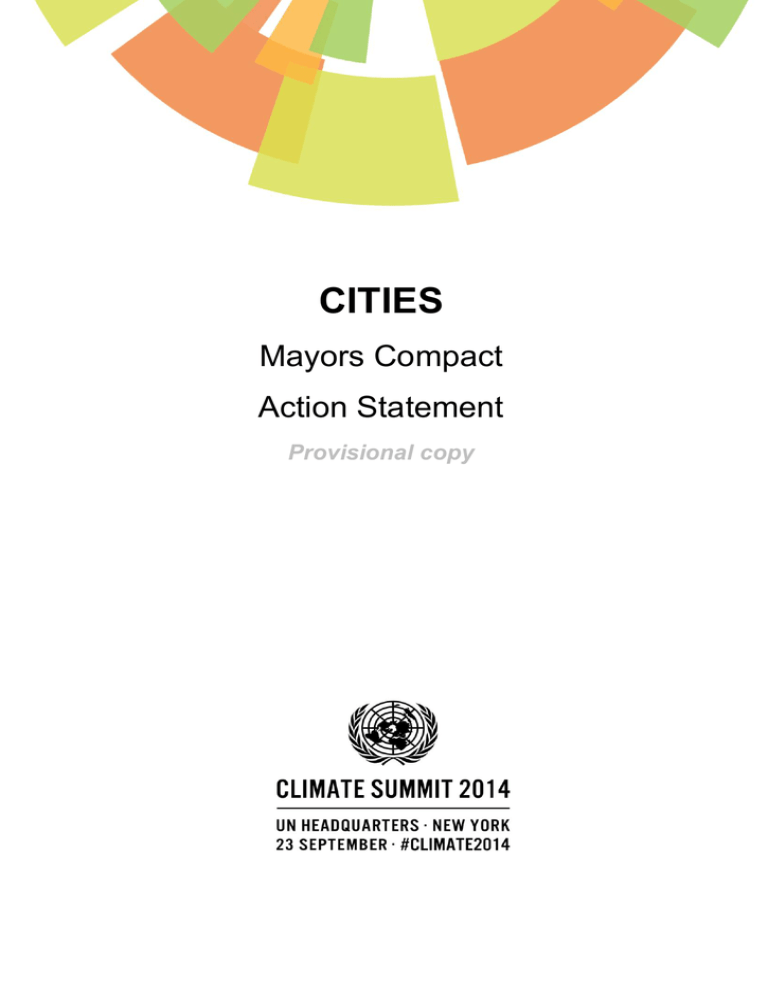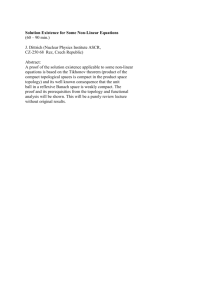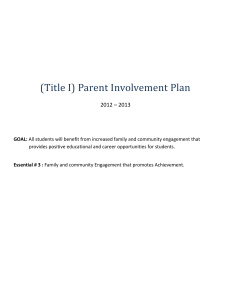CITIES Mayors Compact Action Statement
advertisement

CITIES Mayors Compact Action Statement Provisional copy Action Statement The Compact of Mayors Goals, Objectives and Commitments The Compact of Mayors is an agreement by city networks – and then by their members – to undertake a transparent and supportive approach to reduce city-level emissions, to reduce vulnerability and to enhance resilience to climate change, in a consistent and complimentary manner to national level climate protection efforts. The Compact of Mayors builds on the ongoing efforts of Mayors1 that increasingly set ambitious, voluntary city climate commitments2 or targets for greenhouse gas (GHG) emissions reduction and to address climate risk; report on progress towards achieving those targets by meeting robust, rigorous and consistent reporting standards (as established through City Networks); and make that information publically available by reporting through a recognized city platform3. The Compact of Mayors aims to: 1 Enable recognition of new and existing4 city-level commitments through the Compact by making annual reporting data on local climate action publically available; Establish robust and transparent data collection standards; Commit to common reporting processes for local climate action that allow for consistent and reliable assessment of progress towards meeting those targets; Create an evidence base of the greenhouse gas impact of city action to enable capital flows into cities to support city governments taking further action and to be held responsible for that action and the associated investments; Demonstrate the commitment of city governments to contribute positively towards more ambitious, transparent, and credible national climate targets by voluntarily agreeing to meet standards similar to those followed by national governments; and Encourage national governments to actively support additional city action by recognizing local commitments, establishing more enabling policy environments and directing resources to cities to limit any further increase in global warming and to appropriately resource both mitigation and adaptation local climate action. Senior elected representative of a city-level and/ or the City Council (if this is required for a commitment) that represent a city administration and may agree to such a commitment. 2 Intended to align with relevant internationally recognized approaches. 3 E.g. carbonn Cities Climate Registry, CDP Cities 4 Recognize existing city-level commitments, e.g. , US Mayors Climate Protection Agreement (2005), the EU Covenant of Mayors (2008), Making Cities Resilient Campaign (2010), the Global Cities Covenant on Climate – the Mexico City Pact (2010), the Durban Adaptation Charter (2011) among others. To show compliance with the Compact, Mayors: Register “City Climate Commitments” (targets for GHG emissions reduction and plans to adapt to climate change); Report annually on progress towards achieving GHG emissions reduction targets and assessing climate hazards, using standards established through City Networks; and Disclose this information publicly by reporting through a recognized city platform. Under this Compact, We, the leading global city networks, ICLEI-Local Governments for Sustainability (ICLEI), C40 Climate Leadership Group (C40), United Cities and Local Governments (UCLG) commit to mobilize our members, other cities, networks and initiatives, to engage in the following: Target Setting Establish a cooperation framework to collect and aggregate new and existing city commitments and climate data. Encourage cities to register: o voluntary “City Climate Commitments” including GHG reduction targets as a compliment to internationally recognized approaches;” and o Local climate adaptation plans. Reporting Standards Adopt minimum, standard and transparent reporting as a way of measuring progress towards meeting “City Climate Commitments” that include mitigation and adaptation and measuring “compliance” with the Compact. For mitigation, compliance means reporting that is: o sufficiently robust and rigorous to allow for reliable sectoral-level reporting of GHG emissions; o consistent with the Global Protocol on Community-scale GHG Emissions (GPC) as the new globally recognized standard for community scale emissions reporting5; and o inclusive of activity data (also referred to as emission drivers) to allow for compliance monitoring without requiring third party verification or review. o For adaptation, compliance means reporting on: o climate change adaptation commitments; o plan(s) to reduce vulnerability or enhance resilience to climate change; and o key relevant climate change stresses and shocks (hazards) the city is facing, based on an agreed risk framework.6 5 The GPC 2.0 will be released at the COP 20 in Lima, as the new global accounting and reporting standard for city-level GHG emissions. This is a joint activity by the World Resources Institute, C40 and ICLEI, and is supported by a number of international organizations. 6 A common risk framework is to be jointly developed by the City Networks, building on existing frameworks, and in line with relevant international processes including sustainable development and disaster risk reduction. Allow for efficiency and ease of reporting for city officials as well as uptake by international governance processes and bodies and other third parties by: o Designating the carbonn Climate Registry as the single platform to serve as the common, publically available repository for Compact-related data; and o Enabling and supporting annual reporting by local governments against the Compact via existing city reporting platforms by creating automatic linkages to the carbonn Climate Registry as the single data repository to ease reporting burden for participating cities (i.e. reducing the need for reporting multiple times on different platforms) and to simplify data aggregation. Define “Compact compliance” as registration of City Climate Commitments (mitigation targets and adaptation commitments), annual reporting of emission levels consistent with the GPC standard, and registration of climate adaptation plans and reporting on climate change stresses and shocks. Define “intent of Compact compliance” as registration of City Climate Commitments, with reporting of emissions at a level not yet consistent with the standards adopted7. Recruit local governments to commit to the Compact and engage with other city networks to mobilize a substantial increase in the number of cities world-wide adopting GHG emission and risk reduction targets. Support capacity building in cities not yet able to meet Compact requirements, but having expressed interest in doing so. Assess compliance on an annual basis and in time for the SG’s Climate Summit and COPs 20, 21. Compliance Aggregation Aggregate existing reported City GHG reduction targets to quantify impact of city commitments made to date. Governance Establish a secretarial function for the Compact of Mayors – led by the three global city networks - to facilitate cooperation, exchange and expertise around the Compact of Mayors. This function will also outline technical support available to local governments to achieve Compact compliance. Identify and invite Compact Supporters to outline their offers of assistance and support to local governments, and coordinate the offers in an open, transparent manner. 7 Intention to meet annual reporting requirements within 1 year of the initial Compact commitment indicates intent to comply. Partners C40 ICLEI United Cities and Local Governments (UCLG) World Resources Institute (WRI) Energy Cities Eurocities The Climate Group Chinese Global Mayors Forum Citynet








